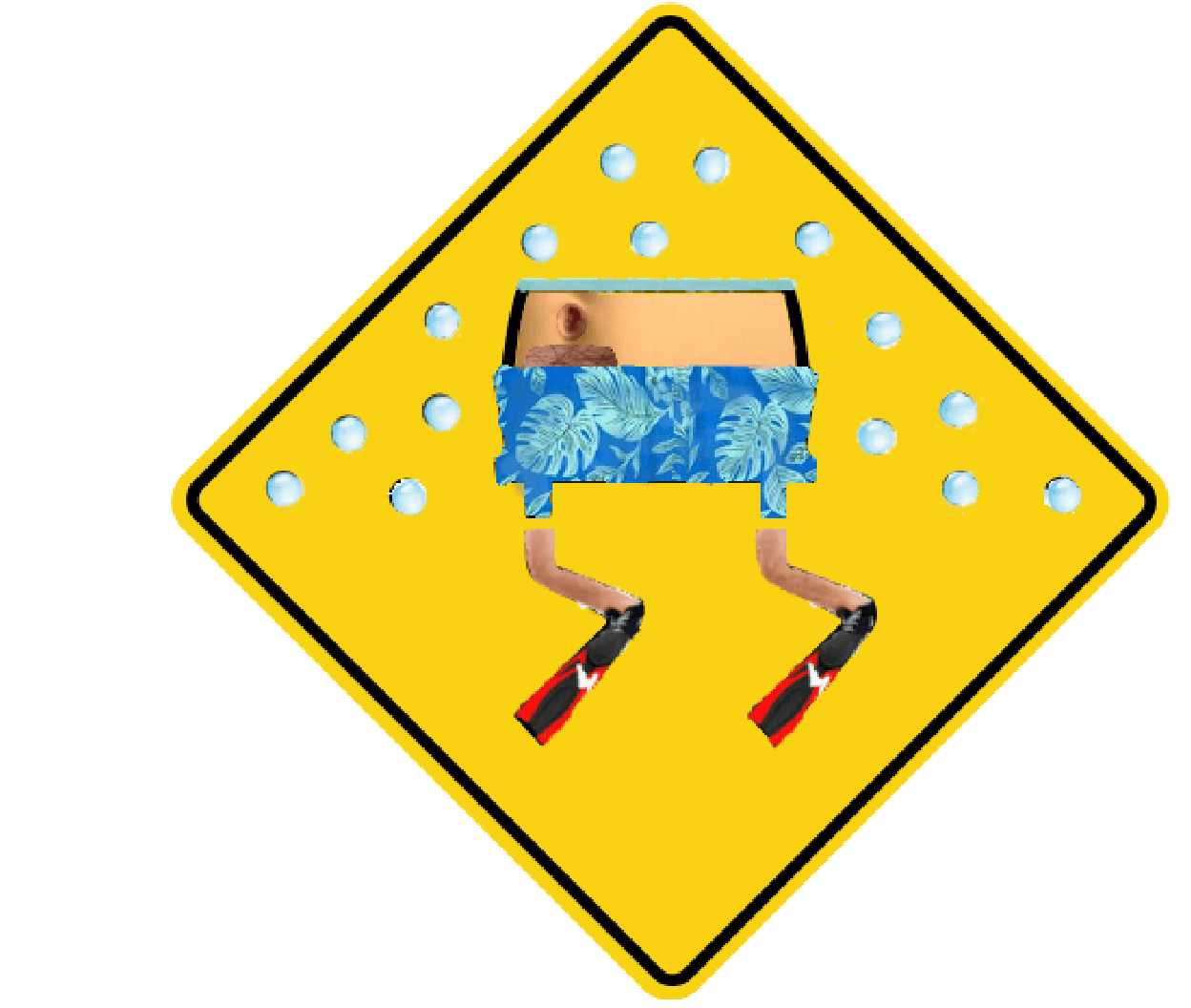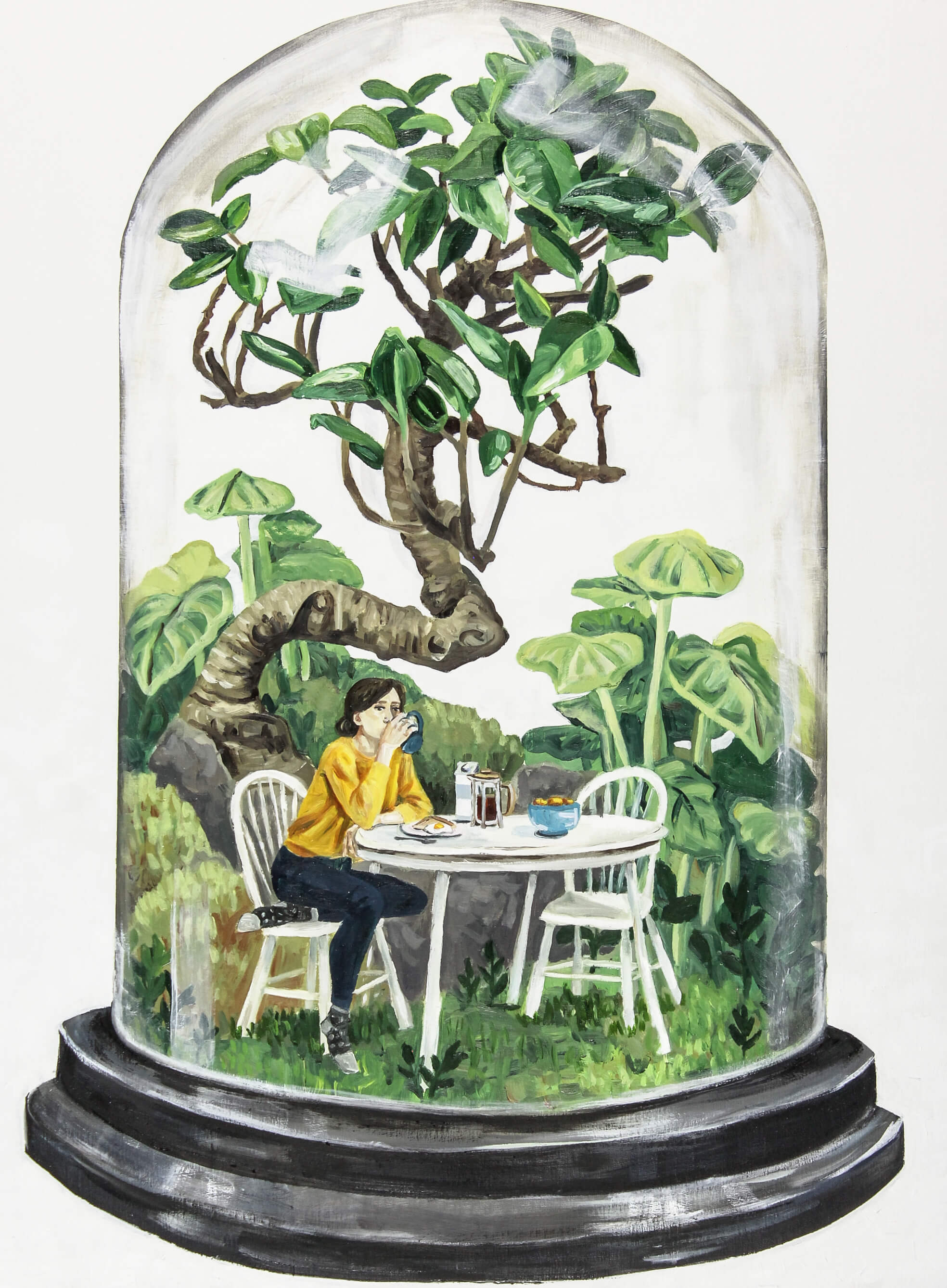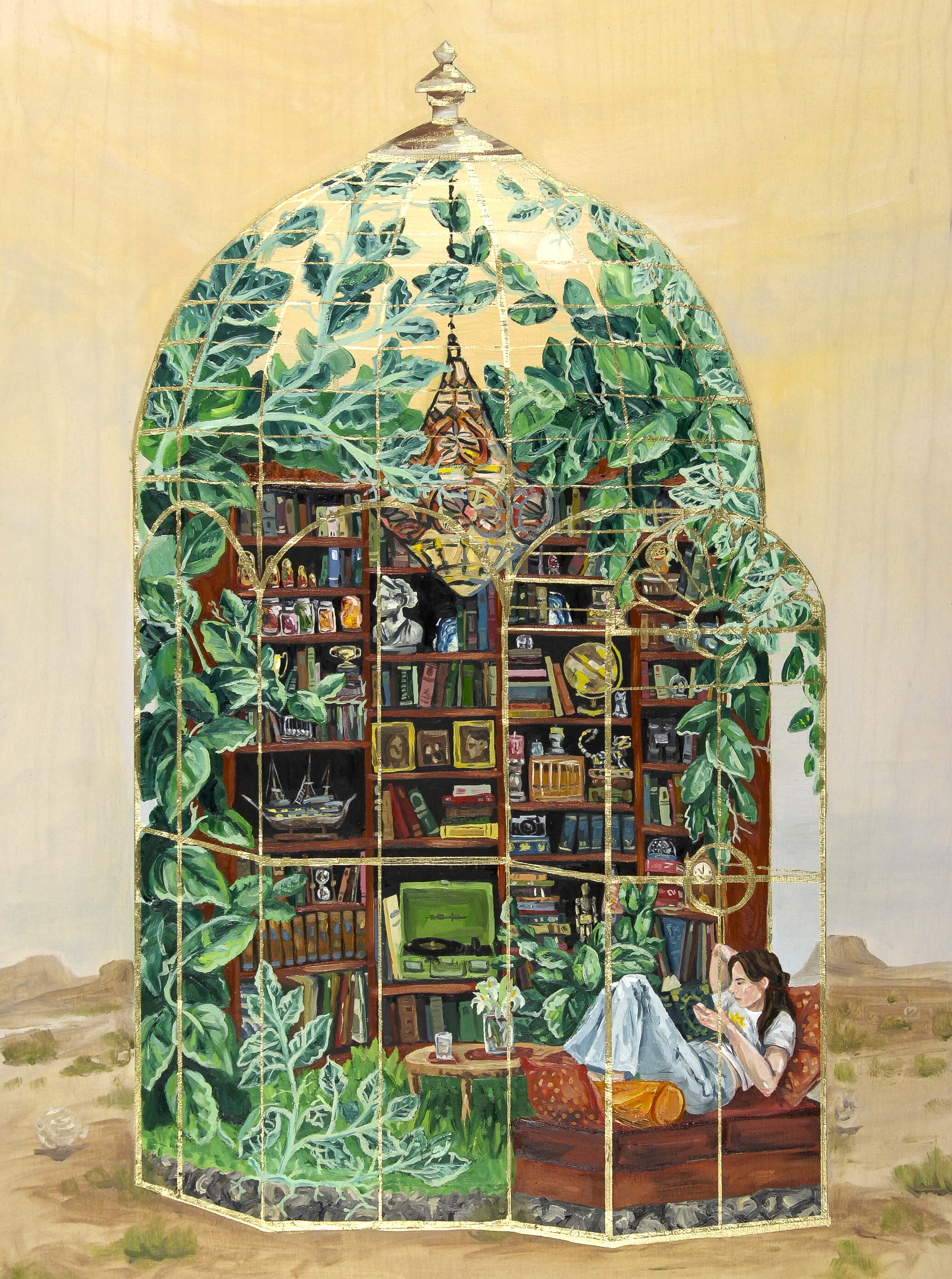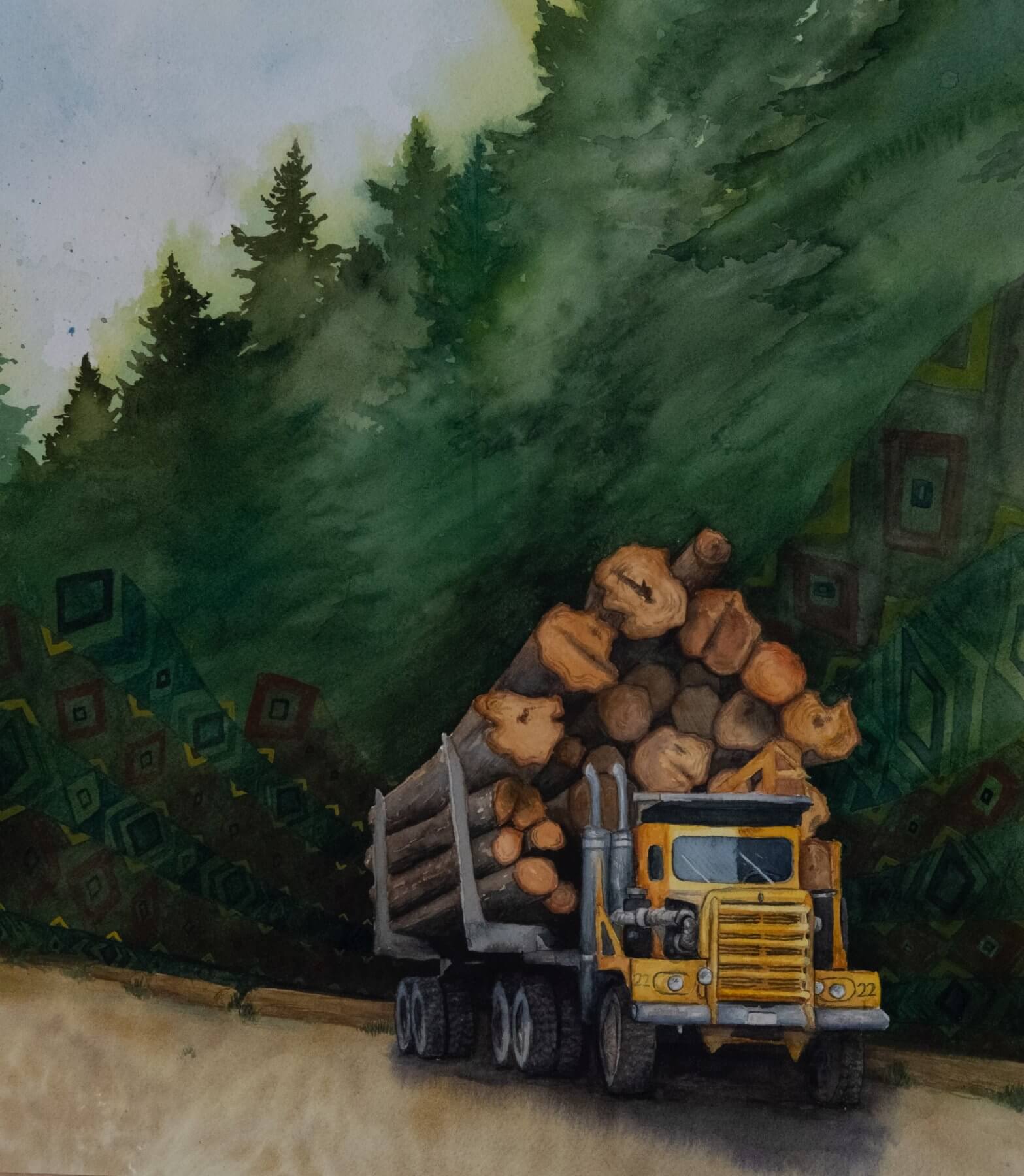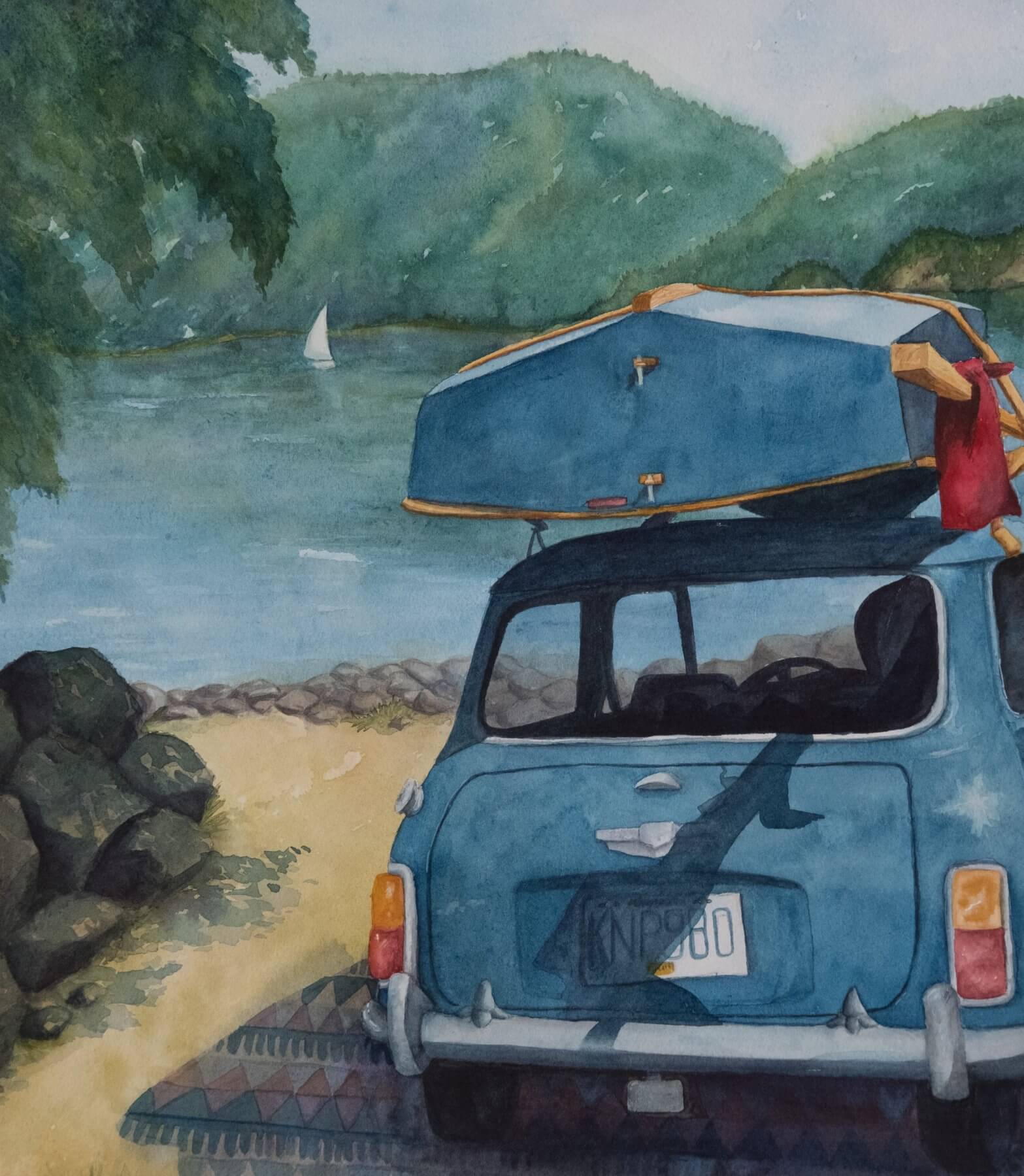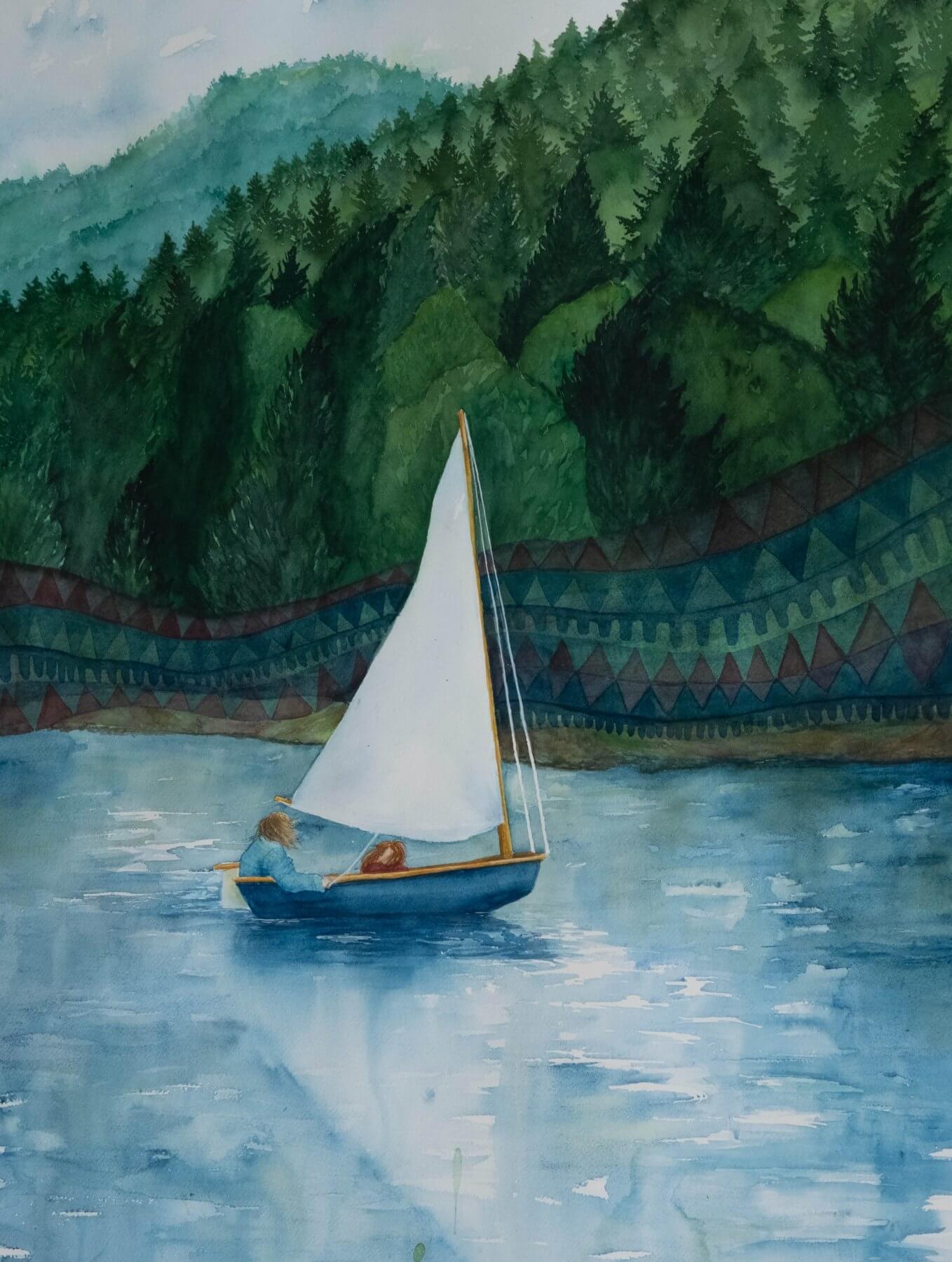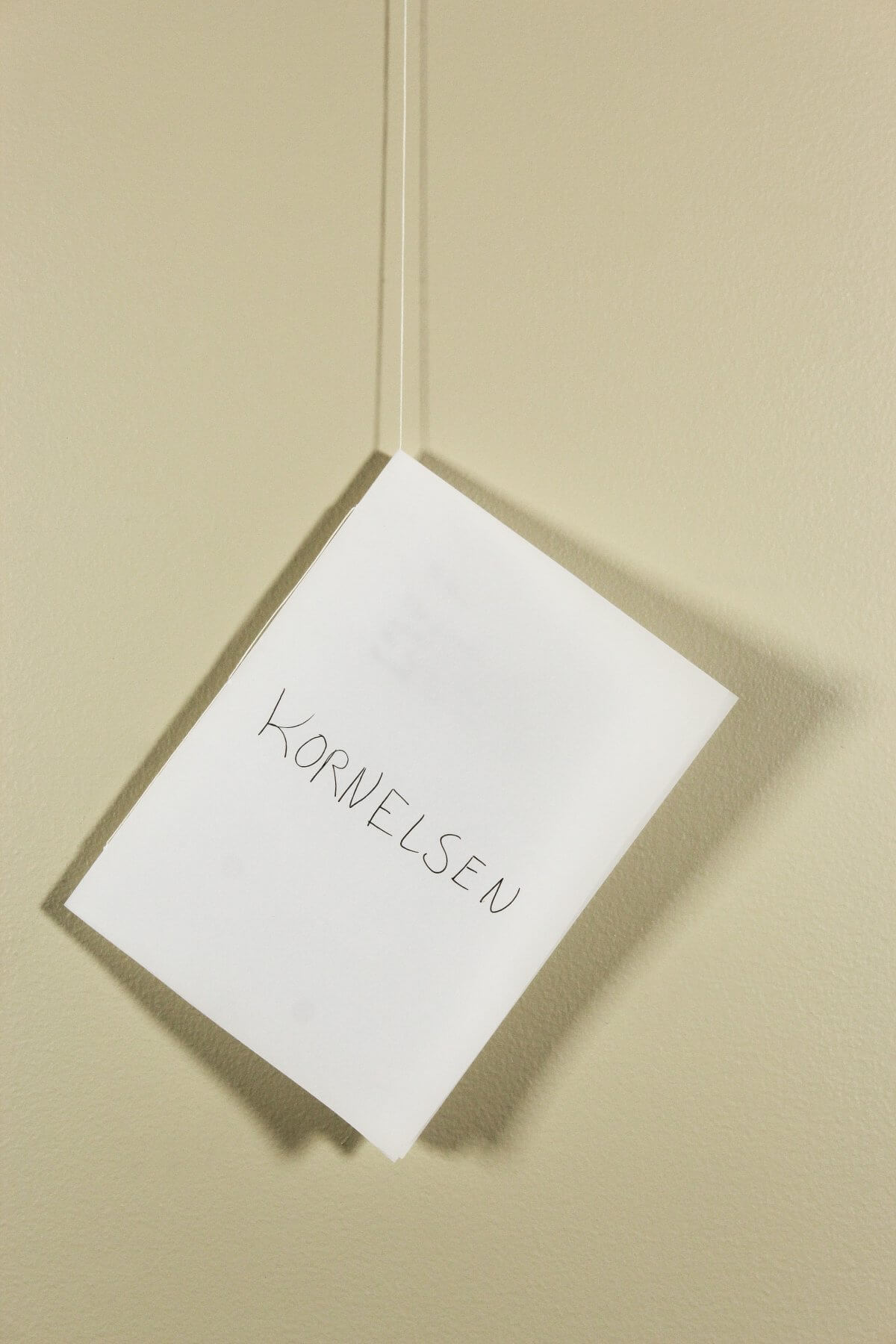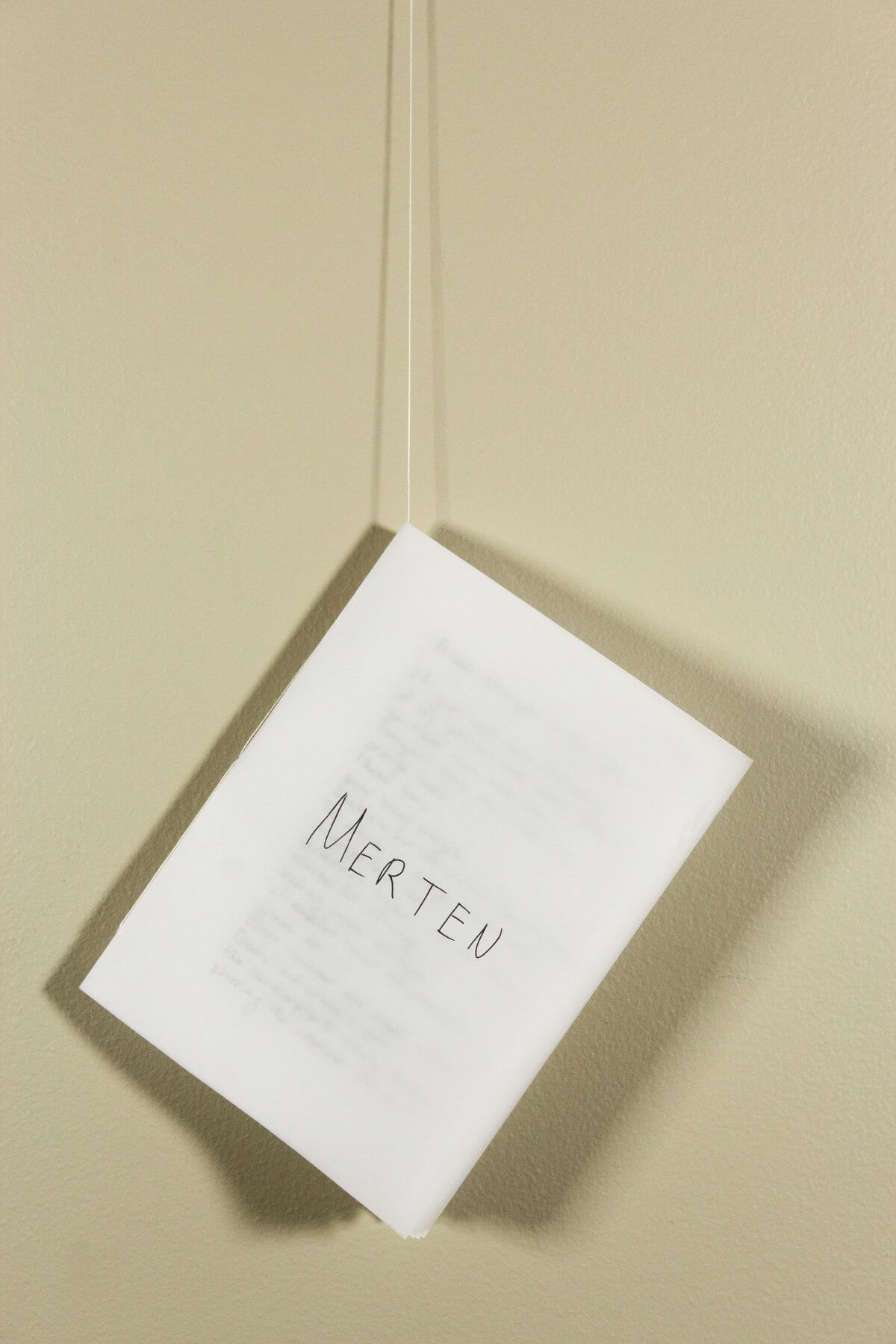A perfectly blended painting or well-timed photograph will leave most of us transfixed, if only for a few seconds. In the case of Redeemer’s art students, these few seconds grew into a passion emboldened by the university’s unique approach to life and learning.
Eveliina Ahonen
“I’ve always loved the arts since I was very little,” says Eveliina Ahonen. “Even in middle and high school, you would see me in all the arts programs. My future plan is to become a creative arts therapist and incorporate visual art, music and theatre into my programs.”
Ahonen’s many years of devotion to the arts recently culminated in her senior exhibition “Sign Language.” She explores how common street signs can be interpreted in different ways. Put concisely in her artist statement, she explains how discovering “new meaning in the same shape showcases how different people view the same stimuli quite differently and critiques how signs (that have been meticulously made to be clear) can in fact be read wildly different from their original intent and looked at in a new creative way. By limiting my interpretation to street signs, I hope to encourage viewers to find something new in the ordinary and to change their way of thinking when they see these same signs in the future.”
Ahonen’s decision to focus on street signs came from a variety of places including her childhood and the varied and rich influences of Redeemer’s broad liberal arts and sciences curriculum.
“As a kid, I would actually look at street signs and wonder what other meanings I could get from them. There’s a piece [in the exhibition] that features the ‘road slippery when wet’ sign. I remember looking at it when I was younger and genuinely thinking it was encouraging me to go swimming in the rain. I would try to explain this to people, but it was hard for them to view it differently because they already know what the sign means. “I took things from my psychology class and put them into my art, and I think that happened throughout my time at Redeemer. In the end, everything’s pretty intertwined. It’s been really good in that sense, the ability to learn different things instead of being narrow-minded in one area.”
- Original “road slippery when wet” sign
- Ahonen’s interpretation
Jocelyn Boville
Jocelyn Boville also modelled her exhibition, “Elsewhere,” after moments of child-like musing.
“I spent a lot of time trying to find something I care about and also would want to paint,” she says. “I ended up with this idea of fantasy and escapism, and I realize it was really rooted in my own experiences of, especially in high school, feeling like reality was boring or something I just didn’t want to deal with on a certain day. So, I would read a lot of books and watch a lot of shows and become very invested in those worlds to the point where they felt more real than the life I was actually living.”
Boville’s artist statement describes this kind of retreat as “living in a greenhouse world” where she is protected “from the elements and has space to live and grow in [her] own way.” However, despite how enticing and sometimes necessary taking a break from one’s everyday worries can be, she acknowledges there’s a definite downside.
“That escape into fantasy is so important and necessary and good, but it can also take over all of who you are and can be almost isolating in a sense. Through my exhibition, I wanted to talk about the good things about fantasy but also about how to have a healthy relationship with reality where you’re not totally cutting yourself off.”
The exhibition’s final piece, “Come Home,” represents the crux of this idea.
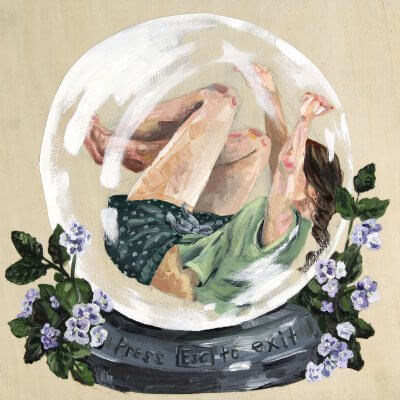
“Come Home” by Jocelyn Boville
“It has a really different shift in mood from the other paintings, which show places that are bigger and better than reality and adventures I want to have. This final piece shows the bad side of fantasy because I don’t want to be completely cut off and trapped. It’s that moment when you realize living in a fantasy world is not sustainable and you haven’t done yourself a favour by becoming so invested in it to the point where reality is not even within arm’s reach anymore.”
“When I’m taking different classes, I’m often thinking about psychology, English and even some philosophy courses I’ve taken. All of that impacts who I am, and therefore impacts the things I see in the world and the things that I create.”
Boville believes the creative process she needed to tap into was strengthened by the unique Redeemer experience.
“Being able to learn from so many different perspectives and disciplines gives me a better, broader understanding of the world in general. That translates into my art because it usually comes from what I’m thinking about. When I’m taking different classes, I’m often thinking about psychology, English and even some philosophy courses I’ve taken. All of that impacts who I am, and therefore impacts the things I see in the world and the things that I create.”
Emma Vanderploeg
In a slight variation from the typically-imagined art student, Emma Vanderploeg is a business major with a fine arts minor. From experience, she knows that having a creative aspect to her education has brought a whole other skill set to the practical elements of her business courses.
“I took an entrepreneurship class this past semester, and it was super fun because I got to put together a business plan and design things like a logo and product packaging. What I learned in my art classes really helped.”
Having an outlet outside of her major also allowed Vanderploeg to revisit the more personal, formative elements of her life. The idea for her senior exhibition came while she was casually browsing through family photo albums.
“There’s this one recurring theme with my mom and oma. Neither of them cares too much about fashion or the way they dress because they’re more adventure-oriented people who want to go camping and things like that. They’d always be wearing these fleece sweaters with fun patterns on them. I ended up centering my whole project around the fleeces they’d wear and the adventures they’d have.”
In her artist statement for “The Fleece Sweaters,” Vanderploeg explains how the ties between fleece patterns and a familial sense of adventure have encouraged her to be more open to new journeys and exploration.
“Paging through these images of adventures experienced long ago has given me the courage to start working toward adventures of my own, exploring new roads, mountains and even relationships…These closet staples remain comfortable and familiar throughout all the adventures, a piece of home that comes along. I hope that, through my watercolour exploration of these themes, I can pass on that same inspiration to others.”
“It’s allowed me to stand out as a job candidate. A lot of other graduates are just focused in one area, whereas I’m able to bring in perspectives from business, art and other courses that can fulfill different aspects of a role.”
Now that Vanderploeg has had time to reflect on her academic career, she attributes much of her positive Redeemer experience to having a holistic education with a broad engagement in multiple different areas.
“It’s allowed me to stand out as a job candidate. A lot of other graduates are just focused in one area, whereas I’m able to bring in perspectives from business, art and other courses that can fulfill different aspects of a role.”
Theresa Kornelsen
Theresa Kornelsen took a somewhat different path for her exhibition. Titled “Heritage,” it features charcoal portraits of her family members each accompanied by a poem that tells a story of or by them.
“While I planned [the exhibition], I just kept thinking that something was missing. After all, most people wouldn’t know who I was drawing,” she says. “I thought about ways to share a bit of who they are and were with viewers. Poetry seemed the most natural fit. And, as it turns out, I had already been exploring the topics of family and heritage in previous semesters through various writing classes. Quite a few of the poems in my show are from those classes.”
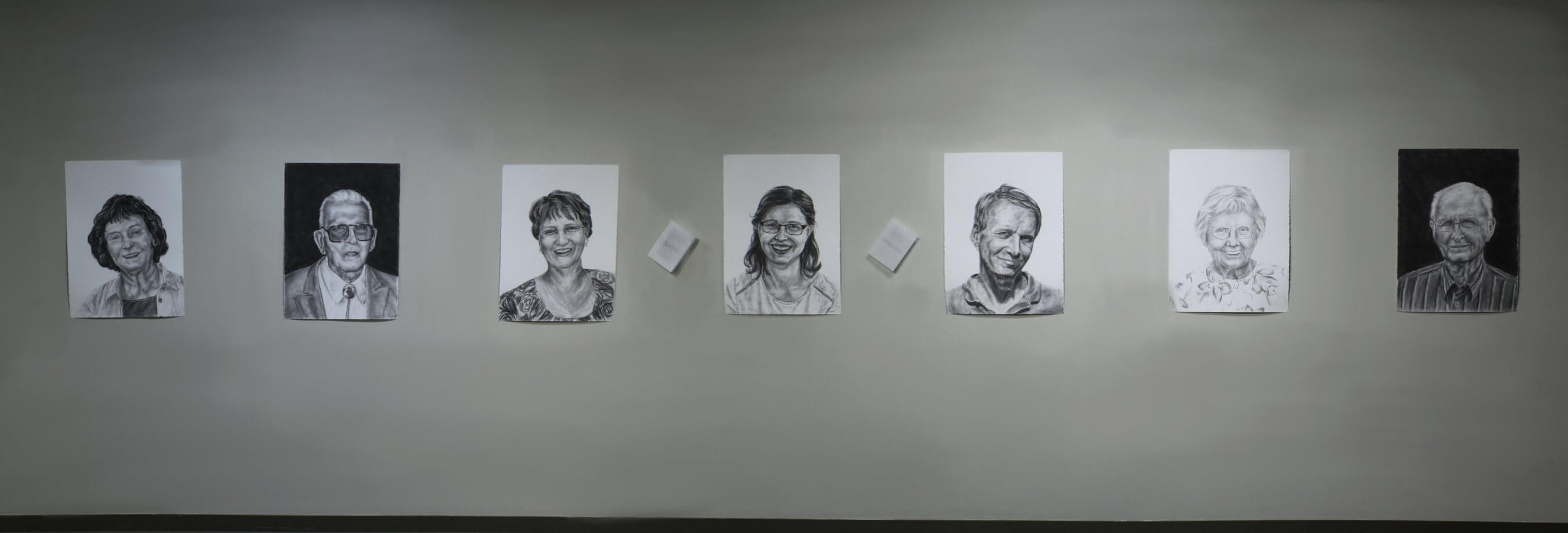
Theresa Kornelsen’s Gallery Shot
Rather than being particularly captivated by a single piece, Kornelsen is drawn in by elements of each one.
“It was fun drawing six of my family members and myself and seeing how I have parts of their features, like my one grandpa’s nose, my dad’s mouth and my mom’s cheekbones. Of the poetry, one of my favourites is “Mt. St. Helens.” Even though Mount St. Helens erupted before I was born, I’ve always been terrified of it.”
Like her classmates, Kornelsen also feels that an interdisciplinary education played a role in her creative process.
“What I learned from the science courses deepened my appreciation for the created world and the beauty and order within it, which are topics and themes I often gravitate to. The various arts I studied helped me see and understand different points of view even if I didn’t always agree with them. I also appreciate knowing more of the history of the world since it allows me to explore certain topics deeper in my art.”
Studying art through a Christian lens helped her mature as an artist and in her faith.
“It can be hard to express faith through art without being cheesy. The art courses I took showed me ways to move past the cheese and think deeply about faith and God through what I make. I’m probably still a little cheesy, but I think I ended up with solid strategies to explore faith and art.”
Now that she’s graduated, Kornelsen feels equipped with the skills and confidence to make and sell art from her home in British Columbia.
“There are so many beautiful places where I live in BC, and I’m very excited to start painting them. I also enjoy woodworking and would love to sell small wood projects alongside paintings and drawings. I feel like Redeemer has given me a solid foundation upon which I can start building my art.”
To experience each exhibition the way it was intended, please visit redeemer-art.ca.

